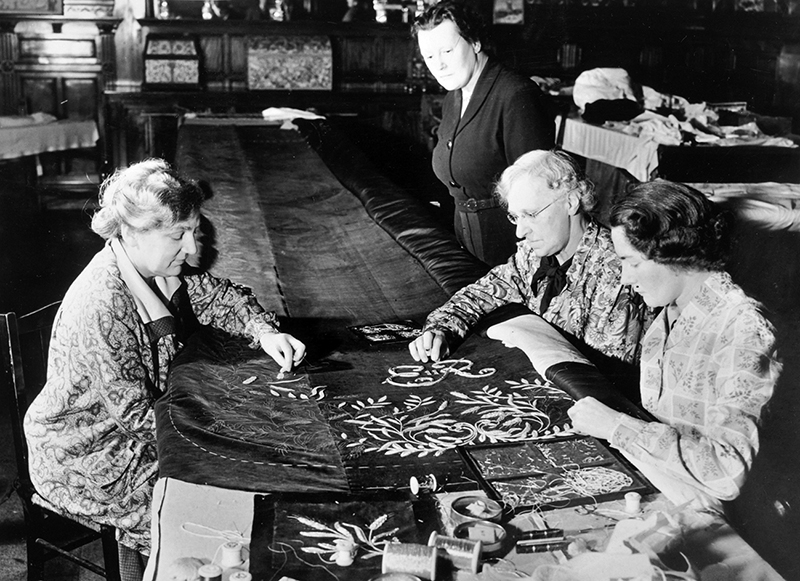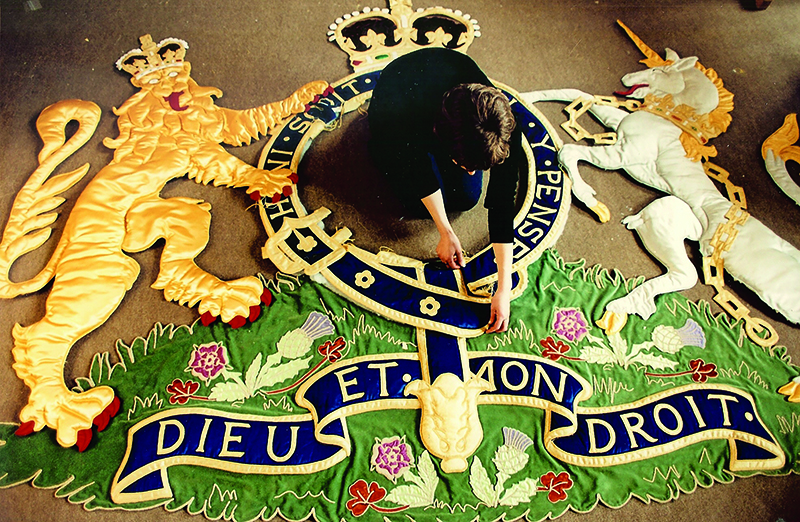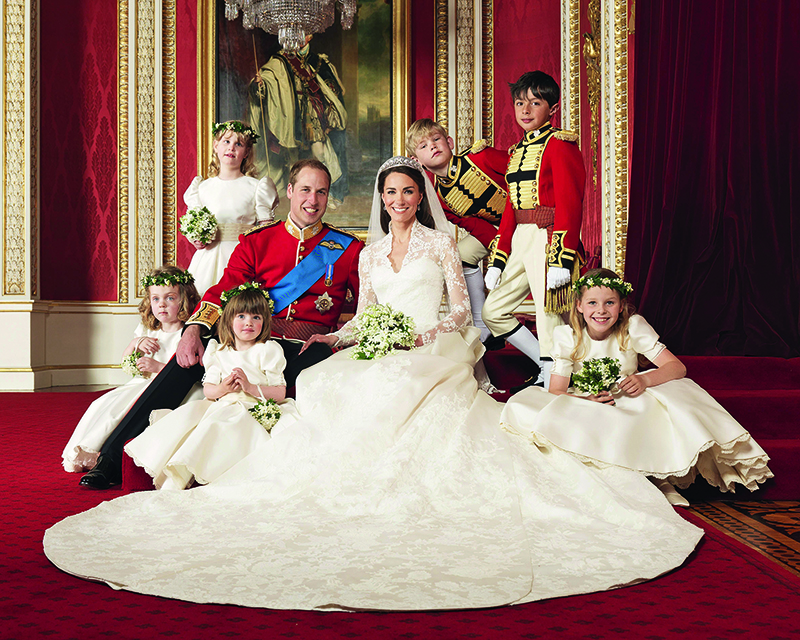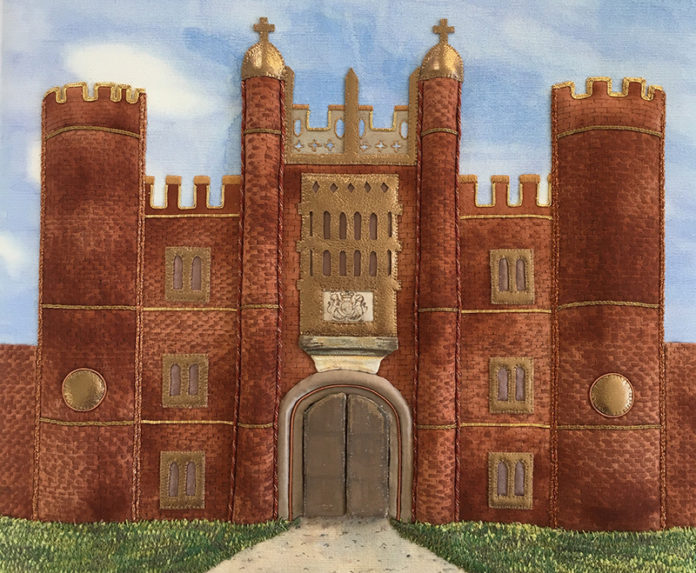In the glorious setting of Hampton Court Palace, the Royal School of Needlework has worked on everything from church vestments to a certain royal wedding dress
Every day, hundreds of visitors flock through Hampton Court Palace’s grand gateway to admire the tapestries in Henry VIII’s Great Hall or get lost in his famous maze. Few of them realise that the Royal School of Needlework, an international school of excellence in the art of hand embroidery, is tucked away at the heart of the palace.
The School is in two parts: the Embroidery Studio, which deals with new commissions, restoration and conservation, and the School itself, a thriving education programme offering courses at all levels.
The School began in 1872, in rather humbler surroundings: a small room above a bonnet shop in London’s Sloane Street. It was founded both to revive a dying art and to provide educated women with a source of income, saving them, in the event of widowhood, from penury. Some 20 ladies stitched the days away here under the patronage of Princess Christian of Schleswig- Holstein, Queen Victoria’s third daughter, known to the School as Princess Helena. Concerted fundraising efforts by Princess Helena led to the opening of a purpose-built centre on Exhibition Road, close to the V&A Museum, where the School grew and flourished, employing up to 150 workers.

The School soon gained prestige, with large-scale embroidery commissions for the likes of William Morris and Edward Burne-Jones in the 1870s and 1880s. In 1901 they made Queen Victoria’s funeral pall – “a labour of love” as Princess Helena described it – and embroidered the coronation robes of Edward VII. The coronation gowns of George V in 1910 and Her Majesty the Queen in 1953 followed.
The School’s history isn’t all robes and regalia, however. During the First World War the RSN taught shell-shocked soldiers how to stitch as an active therapy: unlike knitting, whose rhythmic, methodical stitching allows you to switch off, embroidery requires intense concentration, and is an excellent way of distracting the mind from troubles. The Royal School still works with Armed Forces charities today.

The RSN moved to Henry VIII’s favourite palace, Hampton Court, in 1987: a setting truly befitting of an association with its royal pedigree. Since then, it has gone from strength to strength. Commissions range from the restoration of the curtains of the Royal Opera House – so big that they had to be stitched in situ – to the balcony hanging at Buckingham Palace for the Queen’s Golden Jubilee; not forgetting their most famous commission of recent times: the wedding dress of HRH The Duchess of Cambridge, designed by Sarah Burton of Alexander McQueen.

To read the full article, pick up a copy of Made in Britain.






 © 2024
© 2024